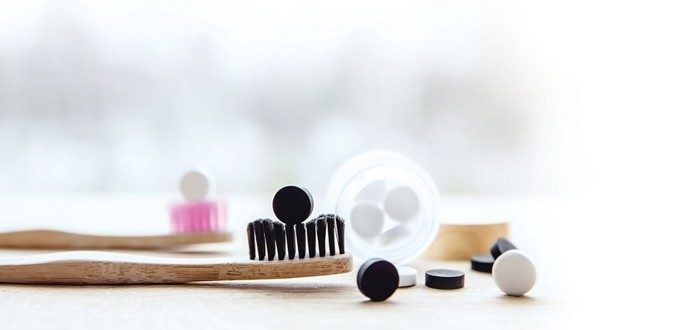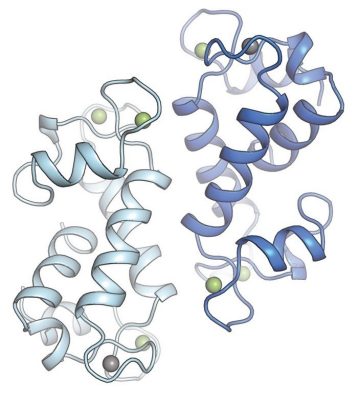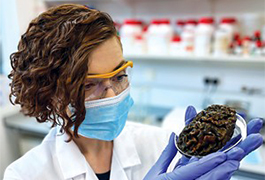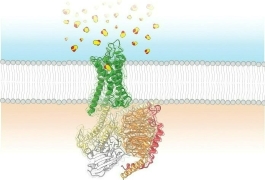Atomic News Roundup—September 2023
In this collection of research reported in ACS Axial and Chemical & Engineering News, we feature technological sleeves, lanthanide purification, the impact of temperature on octopus proteins, asphalt implications on human health, and how toothpaste tablets work.
Silky touch pad blends wearability and function—in a sleeve
Slide your arm into this proof-of-concept sleeve and you can draw colorful pictures, write notes, and even rotate pieces in a video game—all by touching your forearm. Researchers from Qingdao University designed the form-fitting touch pad interface to be comfortable and flexible—essential features of wearable technologies.
The core of the touch pad is a pressure-sensitive hydrogel. Hydrogels are good ionic conductors that can flex and stretch with natural human movement, but they sometimes irritate skin. To avoid this, the researchers sandwiched the hydrogel between layers of silk. The top layer was coated in graphene nanosheets for electrical conductivity.
During testing, real-time responses to pressure—sketches, letters, or rotations—were clear and high resolution. In addition, the device recognized accidental motion for what it was, bolstering the possibility that technology can be integrated into clothing without sacrificing comfort or movement.
Read the full article in ACS Axial: Turn Your Skin Into a Sketchpad With This New Wearable Technology
Protein separates lanthanides with promising efficiency
A Pennsylvania State University research team has demonstrated a new way to purify lanthanides, critical elements in flat displays, hard drives, and other advanced technologies. The method could prove more efficient and environmentally friendly than conventional techniques.
Lanthanides typically form +3 ions and have about the same radii, so they’re usually found together in nature. Their similar chemical properties make separation a challenge—common techniques require toxic ingredients and sometimes hundreds of wash cycles.
Hero of the new approach is lanmodulin (LanM), a natural protein that binds to lanthanides. Building on its previous work with the protein, the Penn State team identified a form of LanM with a 40-fold preference for light lanthanides. Called Hans-LanM, it’s from the bacteria Hansschlegelia quercus.
To test Hans-LanM’s separation ability, the team dissolved neodymium and dysprosium in an acidic solution. With one pass through a separation column, the protein isolated more than 99% of each lanthanide at greater than 98% purity.
Read the full article in C&EN: Protein enables better lanthanide separations
Cold surroundings can change octopus proteins

Chilly temperatures can affect how key proteins function in octopuses and their fellow cephalopods, according to new research from Woods Hole Marine Biological Laboratory and Tel Aviv University.
RNA editing—where changes are made to nucleotide sequences encoded in RNA molecules—is common in animals but doesn’t usually affect protein sequences. However, the collaboration previously found that cephalopods recode thousands of proteins by messenger RNA (mRNA) editing.
In this follow-up work, researchers sequenced RNA from the nervous systems of octopuses kept in temperature-controlled tanks. They found that tank temperature impacts editing frequency—colder water led to heavier mRNA editing.
In addition, that editing changed how some proteins worked. For example, edits to the protein synaptotagmin affected its affinity for calcium, and edits to the protein kinesin affected the speed with which cargo moves through neurons. Whether and how such changes help cephalopods adapt to cooler temperatures is still unclear.
Read the full article in C&EN: How octopuses beat brain freeze
Asphalt research explores human health implications
Asphalt holds together millions of kilometers of roads, neighborhood basketball courts, parking lots, and many other outdoor surfaces. Recent research suggests that the sticky, petroleum-based substance might be compromising human health—and also suggests what might be done to mitigate the impact.
The manufacturing of asphalt mixtures releases around 20 million metric tons of carbon dioxide equivalent annually. But the emissions don’t stop there. Asphalt surfaces can release volatile organic compounds (VOCs), polycyclic aromatic hydrocarbons (PAHs), and particulate pollutants throughout their lifetime, some of which have been linked to adverse health conditions.
Researchers are exploring this issue from several angles: how weather conditions, degradation, and other factors impact surface emissions; how asphalt exposure impacts the health of workers and the general population; and how additives might reduce potentially harmful surface emissions. The challenge is to identify solutions that address health and environmental concerns while appealing to the asphalt industry.
Read the full article in C&EN: Scientists are engineering asphalt that is safer for humans and the environment
Toothpaste tablets repackage the formula for clean teeth

The look and feel of toothpaste have evolved, but—except for fluoride—the core components are the same now as in the 1800s: abrasives to clean, surfactants to wash, sweeteners and flavorings for taste, and binders to keep things together. This winning combination is maintained in the latest toothpaste trend: toothpaste tablets.
Sold in recyclable containers, the tablets are marketed to zero-waste consumers. Brushers chomp on a pea-sized tab and the pressed powder mixes with saliva for a foaming paste.
When it comes to ingredients, tablet and tube toothpastes use similar abrasives, binders, and sweeteners, in varying proportions. The main surfactant in tubes, sodium lauryl sulfate (SLS), works best in liquids; tablets often use coconut-based surfactants instead.
The most notable difference? Many tabs omit fluoride. But that’s about regulations, not chemistry. Fluoride-free toothpaste isn’t subject to the strict US Food and Drug Administration regulations that cover toothpaste with fluoride.
Read the full article in C&EN: What’s inside toothpaste tablets, and can they clean your teeth effectively?







